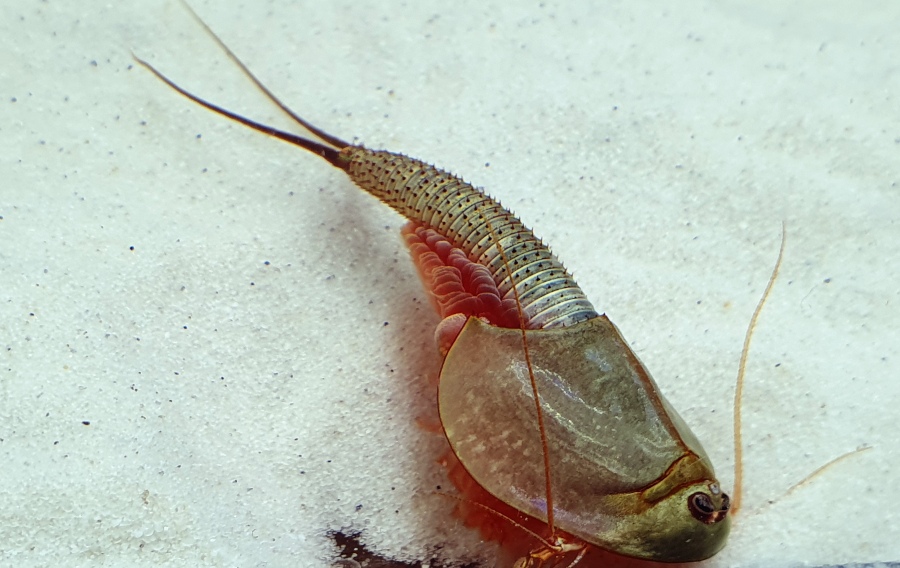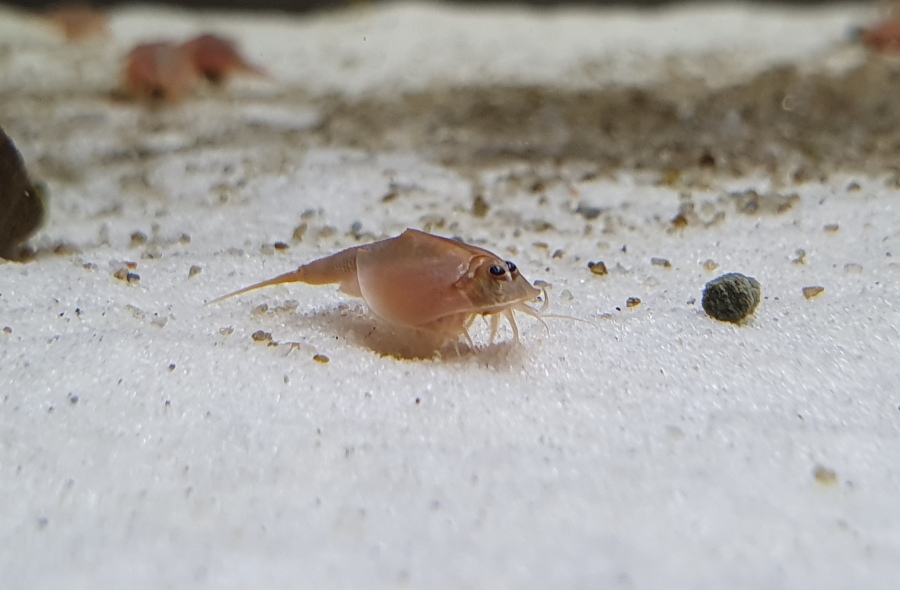Guide
What is the function of the third eye? You will be amazed
As ambitious Triops breeders, we know that these fascinating little animals lived about 220 million years ago. It was a time when dinosaurs inhabited the earth and dominated entire ecosystems. When the era of the dinosaurs came to an end due to the mass extinction in the Cretaceous-Palaeogene boundary, the Triops survived and are now considered the oldest known living animal species on the planet. Our prehistoric crabs have also been to space, which makes this species even more fascinating. We also know that the name Triops comes from the Greek and means “the three-eyed one”. Tri = three and ops = eye makes Triops, the three-eyed one. But have you ever wondered why Triops have three eyes and what the function of the third eye is? There are many myths and theories surrounding this topic. In this article, I will address this question.

The third eye of Triops: Widely held theses
If you start searching for the answer to the question of what the third eye of Triops is for, you will quickly find information on this topic on the internet. While some guidebooks and websites about the third eye state that the exact function has not yet been completely researched, other sources state that some scientists are of the opinion that this organ serves to perceive light and darkness. There is talk of a nauplius eye. There is also information that the third eye is used to measure the osmotic pressure in the water and to adjust one’s own body pressure to it.
But which theses are correct and which are wrong?
Scientific thesis by Dr Erich Eder
To find the answer to the questions, I researched deeper and wanted to learn more about the third eye. In the process, I came across the publication “Salt Habitats in Austria” with scientific theses by Dr. Erich Eder. But who is Dr. Erich Eder?
Dr. Erich Eder is one of the most renowned scientists and best-known experts in the field of hydrobiology (temporary waters). He laid the foundation for the first breeding approaches and has sold them himself, especially the species Triops cancriformis. You can learn more about Dr. Erich Eder on the website of the Faculty of Life Sciences at the University of Vienna.
In the scientific publication “Salt Habitats in Austria“, Dr. Eder writes about osmoregulation with the “third eye”. The “third eye” is not, as is often claimed, the nauplius eye (which is located inside the head), but the nuchal or dorsal organ. But what is the function of this organ?
The salinity (salt content of a body of water) can change rapidly after precipitation and evaporation in bodies of water. In order not to burst through osmosis after heavy rainfall, soft-skinned animals depend on reacting very quickly to the change in salinity by regulating their body fluid concentration. This regulation is taken over by the “third eye” and monitors the salinity in the temporarily filled depressions.

Scientific thesis by Rudolf Seifert from 1930
This thesis was first put forward by Rudolf Seifert in 1930. According to his thesis, the light back reflex known from many aquatic animals also applies to Triops. It was proven in experiments that orientation in space takes place in a photo-tropotactic setting of the body perpendicular to the direction of light incidence. The back is turned towards the light source. In the case of touching, the tactile stimulus predominates, so that the ventral side turns towards the touching object.
Conclusion
Admittedly, this article and the explanation of the function of the “third eye” is somewhat scientific and not immediately understandable. The research on the topic also demanded my full concentration. But it is also a very interesting topic and provides deeper knowledge about prehistoric crustaceans. As a passionate hobby biologist, you can use the newly acquired knowledge to enrich the biology lessons at your school.
- Vietnam: Hundreds of thousands of fish die due to drought and heat - 3. May 2024
- Introduction to the basics of ichthyology - 28. April 2024
- Palaeontology: Fossil traces from China point to raptors - 27. April 2024